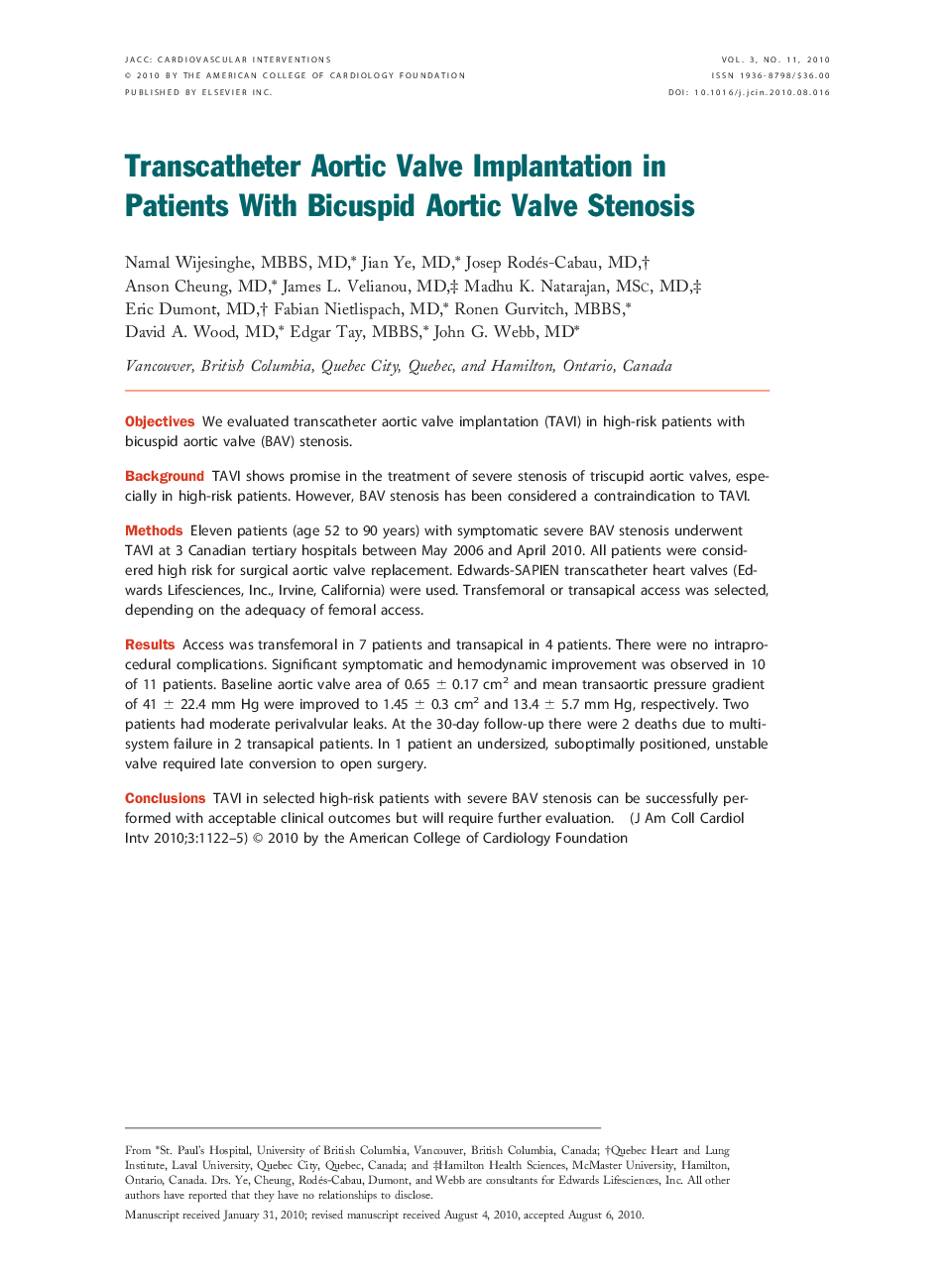| Article ID | Journal | Published Year | Pages | File Type |
|---|---|---|---|---|
| 2941653 | JACC: Cardiovascular Interventions | 2010 | 4 Pages |
ObjectivesWe evaluated transcatheter aortic valve implantation (TAVI) in high-risk patients with bicuspid aortic valve (BAV) stenosis.BackgroundTAVI shows promise in the treatment of severe stenosis of triscupid aortic valves, especially in high-risk patients. However, BAV stenosis has been considered a contraindication to TAVI.MethodsEleven patients (age 52 to 90 years) with symptomatic severe BAV stenosis underwent TAVI at 3 Canadian tertiary hospitals between May 2006 and April 2010. All patients were considered high risk for surgical aortic valve replacement. Edwards-SAPIEN transcatheter heart valves (Edwards Lifesciences, Inc., Irvine, California) were used. Transfemoral or transapical access was selected, depending on the adequacy of femoral access.ResultsAccess was transfemoral in 7 patients and transapical in 4 patients. There were no intraprocedural complications. Significant symptomatic and hemodynamic improvement was observed in 10 of 11 patients. Baseline aortic valve area of 0.65 ± 0.17 cm2 and mean transaortic pressure gradient of 41 ± 22.4 mm Hg were improved to 1.45 ± 0.3 cm2 and 13.4 ± 5.7 mm Hg, respectively. Two patients had moderate perivalvular leaks. At the 30-day follow-up there were 2 deaths due to multisystem failure in 2 transapical patients. In 1 patient an undersized, suboptimally positioned, unstable valve required late conversion to open surgery.ConclusionsTAVI in selected high-risk patients with severe BAV stenosis can be successfully performed with acceptable clinical outcomes but will require further evaluation.
